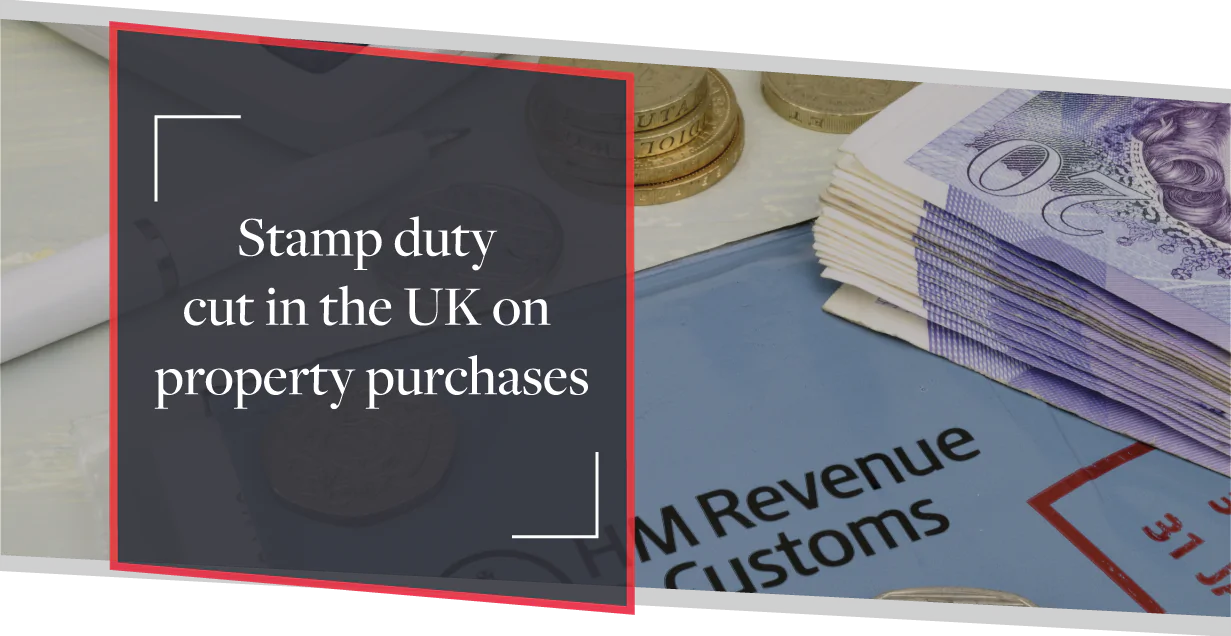
July 16th, 2020
The latest plan to stimulate the housing market, post-UK lockdown, was revealed last week by the Chancellor, Rishi Sunak. He announced with immediate effect that stamp duty on all property purchases below the value of £500,000 would be put on hold for the next 6 months, until March 2021. How will this affect your mortgage application and what can you do to take advantage of the opportunity?
What is Stamp Duty?
Stamp duty is an unavoidable cost for the majority of homebuyers and has to be taken into consideration when purchasing a property. Until the Chancellors, announcement stamp duty became payable on a property purchase over £125,000 (£500,000 for first-time buyers).
You pay the tax when you:
- buy a freehold property
- buy a new or existing leasehold property
- buy a property through a shared ownership scheme
- are transferred land or property in exchange for payment, for example, you take on a mortgage or buy a share in a house.
Currently, the tax is paid in bandings, in percentages (%) based on the value of the property and is paid when completing the purchase. The banding on residential properties before the temporary change was implemented had been:
| Property or lease premium or transfer value | SDLT rate |
| Up to £125,000 | Zero |
| The next £125,000 (the portion from £125,001 to £250,000) | 2% |
| The next £675,000 (the portion from £250,001 to £925,000) | 5% |
| The next £575,000 (the portion from £925,001 to £1.5 million) | 10% |
| The remaining amount (the portion above £1.5 million) | 12% |
The rates may differ compared to a buy-to-let or purchasing a second property; you can find the full details on the official government page.
Will this affect my mortgage application?
As is stands, a mortgage lender will not loan additional funds to cover the cost of Stamp Duty. Before considering a property purchase you will need to hold sufficient equity within your existing property or money set aside specifically to cover the costs of completing a move. It’s essential to remember this can include removal fees, solicitors’ fees and of course Stamp Duty.
Stamp duty is not often a significant factor for a lender assessing a mortgage application, however, the potential saving of thousands of pounds in stamp duty charge will impact how much you are able to include a deposit. Arguably this is the biggest benefit for new purchasers as the temporary removal of the charge could provide the opportunity to secure a lower interest rate.

Many lenders CMME work with, have taken to removing low deposit mortgage options since the country went into lockdown, with 90 and 95% loan to value mortgages becoming difficult to source. This has largely reflected concerns over property values decreasing, there-by raising risk for the lender.
The removal of stamp duty may be a way for potential borrowers to make up the shortfall to reach more widely available 85% loan to value options, with the added benefit that the interest rate will also reduce at this level.
Speak to an expert
It is always worth taking advice where possible, and if you are unsure how this will affect your application take the time to understand all of your options.
As well as ensuring you check the changing cost you may also want to look at other factors, which we recently explored in this video: How to get mortgage fit in 2020



